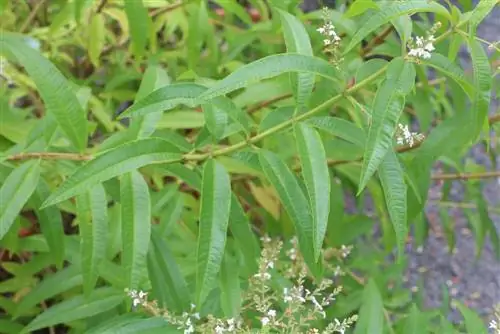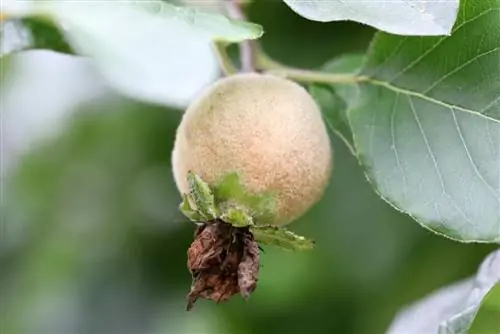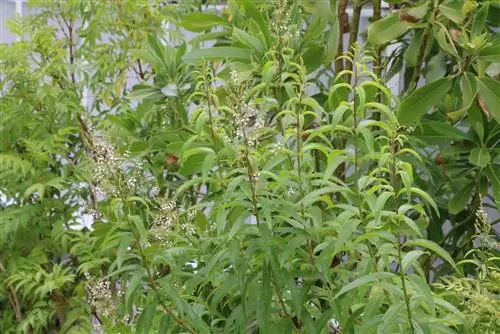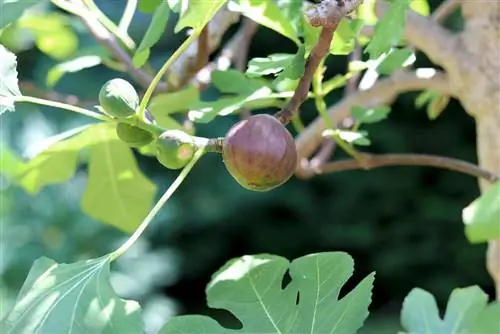- Author admin [email protected].
- Public 2023-12-17 03:39.
- Last modified 2025-01-24 12:45.
In order for a lemon tree to fully develop its paradisiacal splendor, pruning takes on a central position in the list of care factors. Here it is primarily the exact cut and the exact timing that cause uncertainty among hobby gardeners. The following instructions show in detail what is important when it comes to shape and maintenance pruning. There are also practical tips for pruning a young citrus tree. The question of the perfect time is no longer a headache here either. This is how you prune the lemon tree correctly.
The best time
Since a lovingly cared for lemon tree constantly bears flowers and fruit, you are very justified in asking about the ideal date for pruning. The actual growth behavior provides valuable clues to the answer. Even though there is no real break from vegetation, the citrus plant at least minimizes its activities in winter. Since every pruning of the tree encourages the branches to sprout more at the same time, this results in this optimal time:
- Ideally cut a lemon tree in late winter or early spring
- Growth is still at a reduced level
- The new shoots are imminent
If you can estimate the phase of main flowering and harvest on a well-established lemon tree, you will use the pruning shears again at the end. Proper, conservative pruning will encourage another growth spurt with an abundance of new buds.
Instructions for shape and maintenance pruning
The quality of the cutting tool is just as relevant as the cut itself. So pay a little attention to citrus scissors in advance. It should be freshly sharpened and carefully disinfected with high-proof alcohol. This caution prevents both unhe althy bruising of the shoots and infestation by diseases or pests. The pruning process takes place in these steps:
- Cut off dead branches at the base
- Cut on a branch, neither flat along the trunk nor with a long stub
- Cut out weak branches that cannot bear fruit
- Cut partially dried shoots back to he althy, green wood
- Short branches that point steeply upwards and cross each other
- Thin the crown so that light and air reach all areas
Always place the scissors 2-3 mm above an outward-facing bud. In this way you stimulate the shoots in the desired direction. It is an advantage to hold the tool at a slight angle so that any plant sap that comes out drains away quickly. The special grace of a lemon tree is particularly accentuated by a round-shaped crown. Therefore, cut the shape in several stages and repeatedly take several steps back to examine the result so far.
Tip:
When pruning a lemon tree, fruit-bearing branches are not cut.
Tips for parenting
Competent training sets the course for a lemon tree's perfect stature from an early age. At the same time, experienced hobby gardeners ensure vital and resilient plant he alth, which results in a rich harvest of delicious citrus fruits. The following tips would like to contribute to this.
Possible forms of education
A lemon tree offers multifaceted variations in shape. Before you start a parenting cut, the decision regarding the final silhouette should be made.
Sphere shape
Probably the most popular shape for a citrus tree with a round crown on a short trunk. The spherical shape is particularly effective in the pot. In addition, it is ideal for planting in small garden beds as it takes up little space.
bush shape
This design corresponds particularly well with the natural growth habit, with the lemon tree already branching out at the base. Therefore, alternative cultivation on a trellis is possible, but is rarely carried out in hobby gardens.
Niederstamm
This form of training - in addition to the spherical shape - is favored in ornamental and winter gardens. The advantages are obvious: the branches are easy to reach for cutting and harvesting. In the open field, the sprawling crown shades the trunk to protect the sensitive bark from the elements.
High trunk
This modification is rarely found in these latitudes, because a lemon tree several meters high is a rarity. In mild wine-growing regions, it is worth trying to prune the trunk from year to year in order to grow it higher.
Education
Largely independent of the defined growth habit, the training of a young lemon tree follows a uniform pattern. The main directive is to create a robust framework, whereby the intended final shape of the crown is determined.
- Short young shoots from a length of 20 centimeters to achieve a compact growth habit
- Determine 2-3 stable branches as supporting scaffolding branches and leave them standing
- Cut competitive instincts consistently at the base
- Cut the scaffold branches down to 20 centimeters next spring to grow 3-4 new shoots
- Continue in this rhythm until the desired branch is reached
This approach may require repeated pruning between March and September in the first few years. If the lemon tree sprouts, cut it back again as soon as the fresh leaves have turned a dark green color. As part of this repeated care measure, you can easily keep the irregular growth that young lemon trees are prone to under control. Once the desired habitus has been achieved, switch to the one-off maintenance cut cycle according to the instructions shown. It is important to note that the main shoot always protrudes 10-15 centimeters above the remaining branches. In this way you will make the required juice scale.
Tip:
Do not allow twigs on the leading shoot. On young lemon trees, the branches tend to branch twice. Although this circumstance is desirable for all other shoots, it should be prevented on the main shoot by removing the weaker specimen.
The right cut as a problem solution
In addition to the types of pruning, shape, maintenance and training pruning shown, using citrus scissors can solve many problems on the lemon tree. One of the most common types of damage occurs when a he althy branch breaks under the weight of too large or too many fruits. Similar damage occurs if the tree in the pot on the terrace is knocked over by a strong gust of wind. Regardless of the time, there is an immediate need for action in this case. How to do it right:
- Smooth the break with a sharp knife
- This also applies to damage to the trunk
- A high oval wound heals faster than a round shaped one
- Close small wounds with pure charcoal ash to prevent access to fungal spores
- Treat wounds larger than a two-euro piece with a wound closure agent
- Never spread the wound closure over the entire area, but along the outer edge
If the break occurred at a significant distance from the next bud, cut the branch back to there so that no unwanted 'coat hook' is created. As a preventive measure, if in doubt, harvest one or two lemons early to relieve the strain on the branches.
Conclusion
In the expert care protocol for a lemon tree, shape and maintenance pruning should not be missing. In this way, you give a lovingly cared for citrus plant a magnificent silhouette, keep the size under control, support the harvest yield and promote vitality. For established trees, early spring is considered an excellent time when new growth is about to begin. If the lemon is still in the training phase, experienced hobby gardeners repeatedly use scissors from March to September to guide the tree in the desired direction of growth. If you follow these instructions, you will be familiar with all the essential factors of a successful cut.






